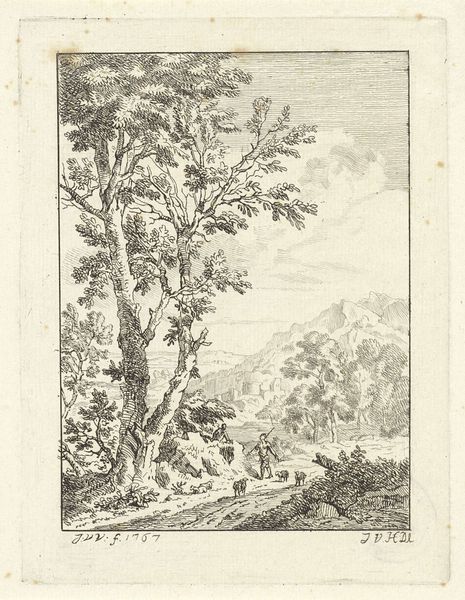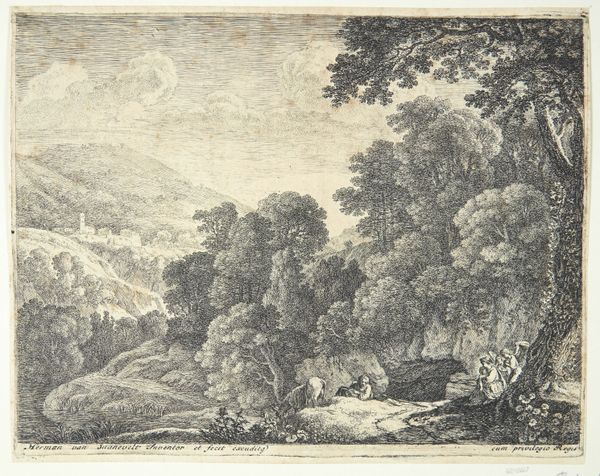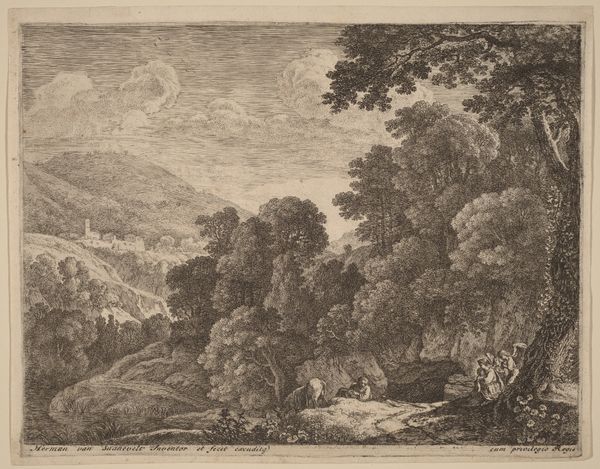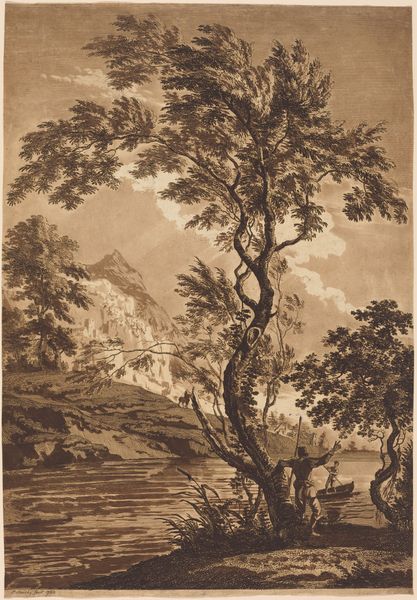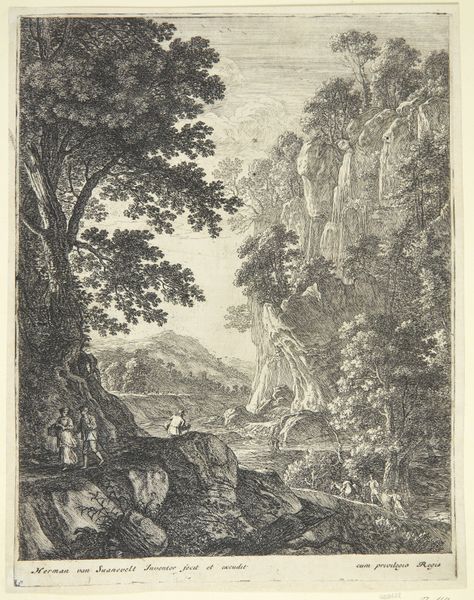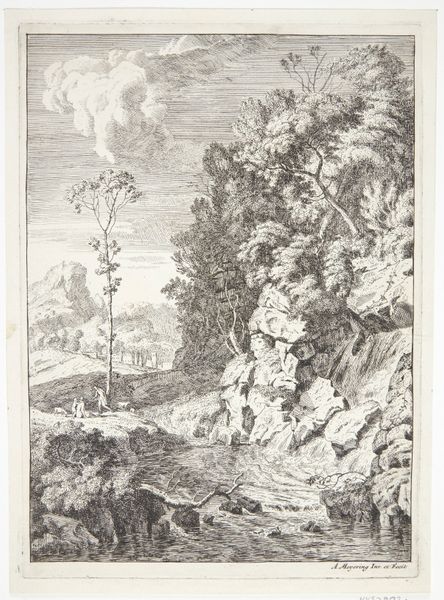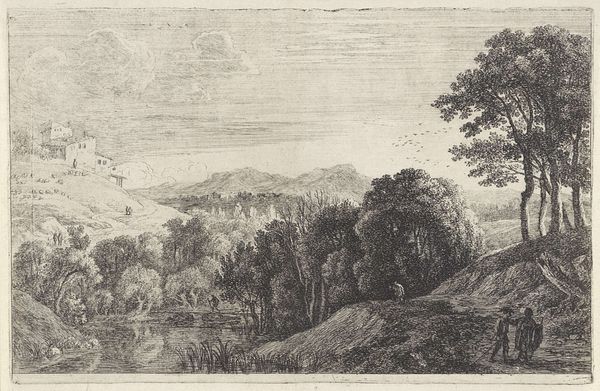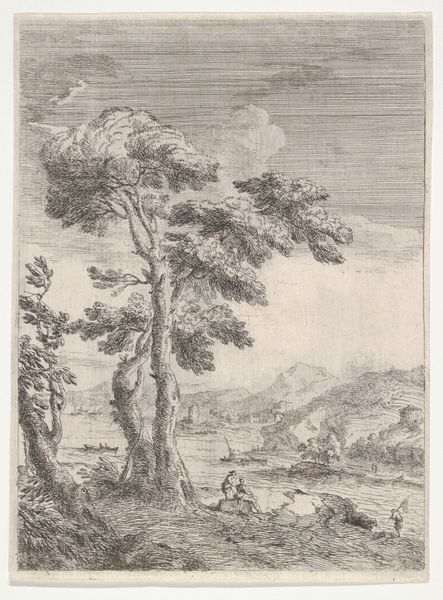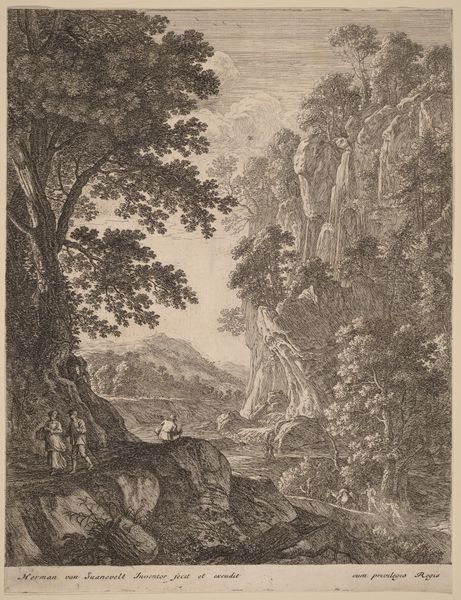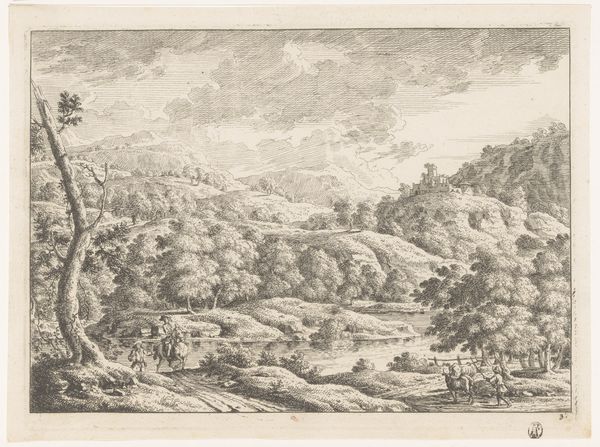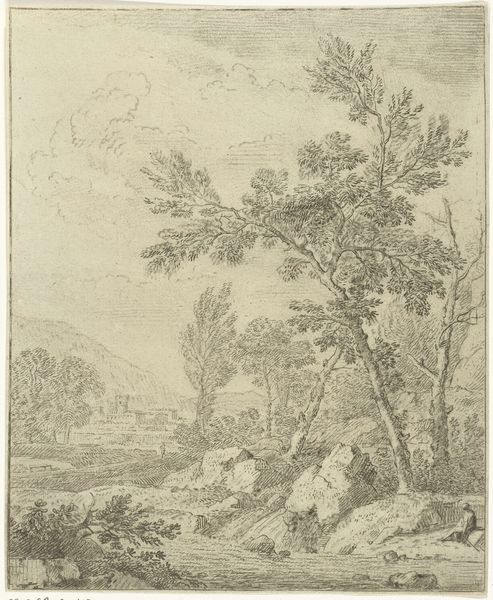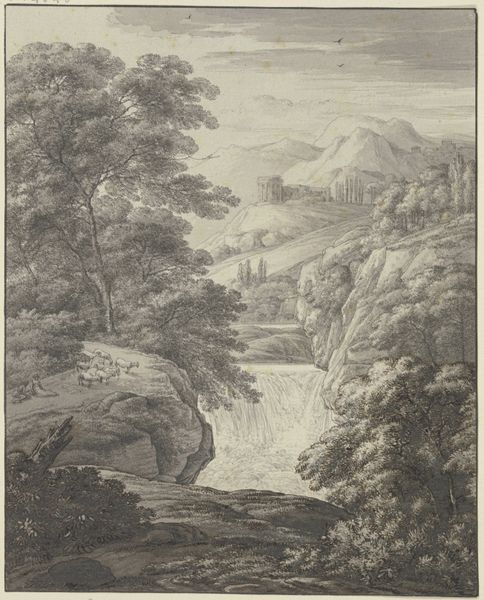
Mountainous Landscape with a Waterfall, Round Tower, Castle, and Banditti c. 1750s
0:00
0:00
Copyright: National Gallery of Art: CC0 1.0
Editor: Paul Sandby’s etching, “Mountainous Landscape with a Waterfall, Round Tower, Castle, and Banditti,” from the 1750s, presents this dramatic scene. It feels…staged, somehow, like a theater set. All these elements—mountains, architecture, even bandits—compete for attention. What's your read on this elaborate imagery? Curator: Indeed, there is a distinct theatrical quality. Notice how the artist places these figures in the lower right. Why do you suppose he includes "banditti"? Think about what they symbolize, the history of the noble savage… Editor: It makes me think of power, or maybe the lack of it. Are the banditti sort of outside normal society, hinting at turmoil or change? I wouldn't usually expect that in a landscape! Curator: Exactly! Landscape, especially in this period, became a repository for cultural anxieties and aspirations. Sandby presents a scene laden with symbols that transcend mere geography. Note the towering mountain, the distant castle – these aren't just visual elements, but potent symbols of aspiration and authority. The waterfall itself evokes ideas of the sublime. What emotions do these symbols collectively evoke for you? Editor: A kind of wistful melancholy. Like, beautiful but… precarious. I see these symbols hinting at things, but the overall scene also hints that none of it might last forever. Curator: Precisely. It captures the Romantic spirit perfectly! Sandby reminds us of nature's indifferent power, while hinting at the fleeting nature of human endeavor through banditry and precarious towers. Editor: It’s much deeper than I initially thought – more than just a pretty picture. I really see the narrative now. Curator: And isn’t that what makes these older images continue to fascinate? They speak to us across time because these cultural symbols echo through the ages.
Comments
No comments
Be the first to comment and join the conversation on the ultimate creative platform.
